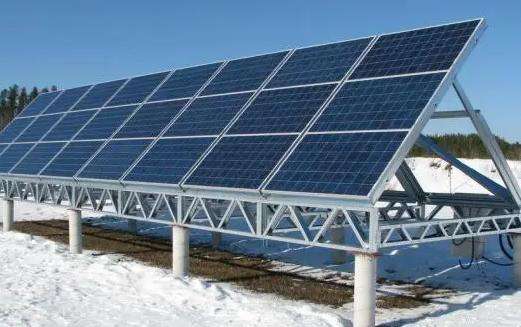Although solar panels are magical, they cannot provide stable power to electrical equipment without batteries! So why do you need batteries?
Cannot store electrical energySolar panels are just tools to convert sunlight into electrical energy. They cannot store electrical energy. Batteries are therefore necessary to store electricity.
Unstable voltage
The output voltage of solar panels will change with the intensity of light. Such unstable voltage cannot meet the needs of electrical equipment. Therefore, a voltage conversion module is needed to convert unstable voltage into a voltage suitable for battery charging.
The role of the batteryThe battery is like a large reservoir that stores stable energy intended for use by electrical equipment. He cant provide stable power to electrical equipment, allowing us to benefit from clean and environmentally friendly energy provided by solar energy.
Do solar panels emit radiation?
1. Advantages of Rooftop Solar Panels
1. Installing solar power generation panels on the roof can effectively use solar energy resources to generate electricity, which can save electricity. The state now provides subsidies for the installation of electricity production panels. With solar power generation, our usual electricity consumption will be relatively low, saving money on your home's electricity bill.
2. Installing solar panels on the roof is relatively simple. Generally speaking, a few workers can install them in half a day.
2. Disadvantages of Rooftop Solar Panels
1. The investment in installing solar panels is relatively large. For some families, you may not accept. this is due to the cost of installation.
2. This type of solar power generation panel is installed directly on the roof if exposed to wind and sun for a long time, it may cause corrosion problems.
3. After all, solar panels are obtained from solar energy. Only by using solar energy can we generate electricity, so they can only be used on sunny days, if it is cloudy or if it is sunny. the sun is not particularly bright, electricity consumption will be affected.
4. During installation, holes must be drilled on the roof to penetrate the roof. Unreasonable installation at a later stage will result inThere will be no leaking problems on the roof.
3. Is it safe to install solar panels at home?
1. If you install solar panels, this is actually actively encouraged by the state, and this can produce unused electricity which can also be sold to the national grid and receive appropriate subsidies. It can be connected to the electricity network, which means that two electricity meters must be installed in the house. One of the electricity meters is the electricity provided by the electricity company and the other electricity meter is the electricity produced by the solar panels.
2. According to experiments, if more than 1,000 photovoltaic panels are installed in a building, the annual electricity generation can reach 300,000 kilowatt hours, so it is relatively reliable.
Photovoltaic energy production emits radiation, but it is veryweak.
Solar panels typically generate electricity through photovoltaics, which convert light energy directly into DC electricity through the characteristics of semiconductors. They do not produce radiation and do not emit carbon dioxide waste gases. The photovoltaic module itself does not produce any electromagnetic radiation when generating electricity, but a photovoltaic plant is a power plant that converts energy from solar radiation into electrical energy via an array of solar cells. The principle of photovoltaic energy production is the photoelectric effect, which in reality. converts electromagnetic waves (photons) To produce electricity, electromagnetic waves are a kind of radiation.
The production of photovoltaic energy will therefore cause radiation. Concerning the photovoltaic plant itself, there is no literaturere proving the problems of radiation and pollution at home and abroad, indicating that the radiation from photovoltaic power generation is extremely low. If the solar photovoltaic power generation equipment is qualified, it will only produce a little radiation, and the resulting radiation will not affect or interfere with other equipment.
Principle of photovoltaic power generation:
The main principle of photovoltaic power generation is the photoelectric effect of semiconductors. When a photon irradiates a metal, all of its energy can be absorbed by an electron in the metal. The energy absorbed by the electron is large enough to overcome the Coulomb force inside the metal atom to do work, escape from the metal surface and become. a photoelectron. Silicon atoms have 4 outer electrons, so atoms with 5 electronsexternal electrons, such as phosphorus atoms, are doped in pure silicon, this becomes an N-type semiconductor. If atoms containing three external electrons, such as boron atoms, are doped in pure silicon, a semiconductor -P type conductor is formed.
When P and N types are combined, a potential difference is formed on the contact surface and becomes a solar cell. When sunlight hits the P-N junction, current flows from the P-type side to the N-type side, forming an electric current. The photoelectric effect is an important and magical phenomenon in physics. Under the irradiation of electromagnetic waves above a certain frequency, the electrons contained in certain substances absorb energy and escape to form an electric current, that is, photoelectricity.
Reference for the above content: Baidu Encyclopedia-Photovoltaic Power Generation














